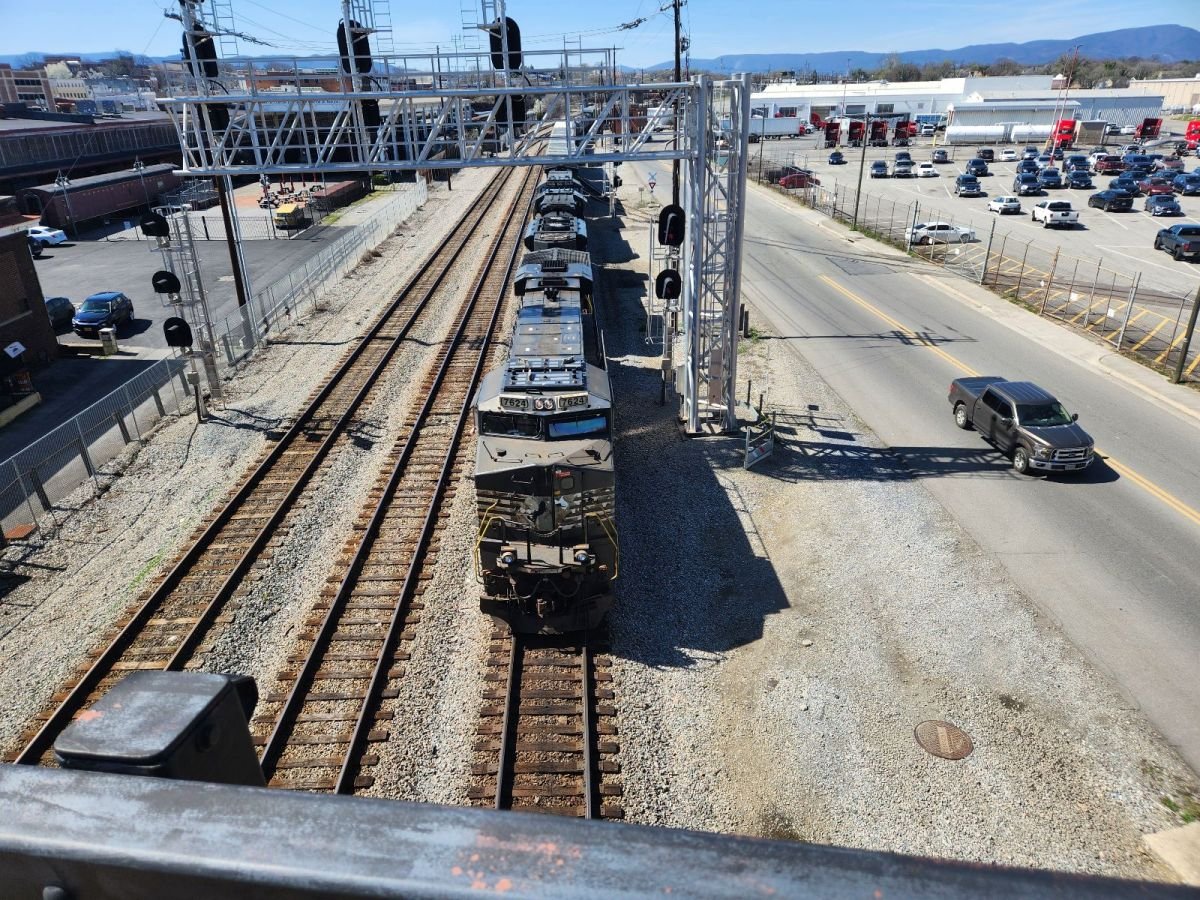Rail & Road
Rail Delivery Group “On the train you can” by TMW – Campaign

Rail & Road
Recycled Rubber Track Beds Spark Outrage as Industry Claims 70% Drop in Maintenance Needs

| IN A NUTSHELL |
|
Innovations in the rail industry are often met with skepticism, especially when they promise significant benefits at a reduced cost. However, a recent breakthrough involving recycled rubber track underlay is turning heads across the globe. Conducted on a live freight line in Sydney, this two-year trial demonstrated the underlay’s ability to extend the life of rail infrastructure by reducing ballast wear. The results, published in a reputable journal, have caught the attention of rail operators worldwide, eager to adopt this cost-effective, environmentally friendly solution.
Proven on a Working Freight Line
The two-year trial in Sydney was a robust test of the recycled rubber technology, exposing it to real-world stressors. Researchers from the University of Technology Sydney (UTS) laid tracks on a unique ballast bed composed of tyre-derived cells. These cells were filled with waste materials like spent ballast and coal wash, then topped with recycled rubber grids from old mining conveyor belts. Adjacent tracks continued using conventional methods to provide a clear comparison.
Over the trial period, sensors monitored crucial metrics such as vibration levels and track settlement. The results were promising, showing a marked reduction in ballast degradation and improved stability in the sections using the rubber underlay. This innovative approach effectively protected the ballast from pulverization, a significant leap forward in extending track life and reducing maintenance needs.
How Recycled Rubber Changes the Load Path
Traditional ballast beds operate by interlocking stones to distribute axle loads. Over time, the stresses from cyclic loading crush these stones, leading to drainage issues and compromised support. The innovative rubber underlay acts as both a shock absorber and load spreader, compressing slightly to reduce peak stresses and distribute forces more evenly across the sub-soil.
According to Professor Cholachat Rujikiatkamjorn of UTS, the underlay effectively manages train load distribution, preventing soil settlement issues and enhancing track stability. The direct benefit is a reduction in maintenance activities like tamping, which not only extends ballast life but also reduces the downtime needed for repairs. This is crucial for high-traffic networks such as those operated by Sydney Trains.
Scaling Up for Tougher Locations
Buoyed by the positive results, the research team has secured substantial funding to test the system in more challenging environments. Upcoming trials will focus on high-impact areas like bridge approaches and junctions, where abrupt stiffness changes accelerate ballast wear. The goal is to prove that this technology can handle shock loads without affecting ride quality or safety.
Successful trials could mean a dual environmental benefit: diverting waste materials like tyres and conveyor belts from landfills and extending the life of existing rail infrastructure. This potential for a significant environmental impact makes the technology attractive to rail operators seeking sustainable solutions.
| Test Area | Key Focus |
|---|---|
| Bridge Approaches | Shock Load Accommodation |
| Switches and Junctions | Ride Quality and Safety |
Implications for Global Rail Networks
As rail networks globally grapple with increasing freight demands and tightening budgets, the promise of reduced maintenance costs and improved reliability is particularly appealing. The Sydney trial’s success suggests that this innovation could be a game-changer far beyond Australia’s borders, offering a scalable solution for rail systems worldwide.
Adopting such technology could mean fewer track closures and enhanced network reliability, crucial in maintaining the delicate balance of modern freight logistics. As rail operators consider this new approach, the dual benefits of cost savings and environmental responsibility could drive widespread adoption.
The journey of this recycled rubber underlay from concept to proven innovation is a testament to the power of sustainable engineering. As the technology scales and adapts to various rail environments, the question remains: How will this innovation reshape the future of rail transport worldwide?
This article is based on verified sources and supported by editorial technologies.
Did you like it? 4.6/5 (28)
Rail & Road
Federal appeals court rules that railroad industry group has standing to sue Virginia over a broadband crossings law

A federal appeals court has lowered the crossing gate in front of a Virginia law intended to speed broadband deployment across railways.
The Fourth U.S. Circuit Court of Appeals, in an opinion released Friday, ruled that a railroad industry group has the right to challenge whether a federal statute preempts the state law in question. The industry group cannot, however, challenge whether the law violates the constitutional right to just compensation for private property taken for public use, the appeals court ruled.
Virginia’s General Assembly in 2023 passed the law regarding fiber-optic broadband lines crossing railroads. It passed both the state Senate and House of Delegates unanimously, in response to complaints from internet service providers that railroads were charging them high fees to cross their lines and causing long delays to completion.
The money and time factors were keeping fiber-optic broadband from rural customers, legislators said at the time.
The Association of American Railroads, which represents Norfolk Southern and CSX among others, soon filed suit in Virginia’s Eastern District federal court. The suit contended that federal law on the subject renders the recent state law “void and unenforceable,” and that the state law violates the U.S. Constitution’s “takings clause” by failing to provide the railroads with just compensation based on market value.
The Virginia attorney general’s office responded on behalf of leaders of the State Corporation Commission — which would settle disputes under the law — and the Department of Transportation. The office moved to dismiss the case, claiming in part that the association did not have standing to file without its members’ participation. Neither Norfolk Southern nor CSX, which run most of the commonwealth’s rail lines, was party to the action.
U.S. District Judge David Novak ruled in April 2024 that the association did not have standing without its members’ participation and dismissed the case. The association appealed.
After hearing arguments in November 2024 and January 2025, the court released its opinion on Friday, sending part of the case back to Novak. The Richmond-based jurist will hear arguments centered on the federal Interstate Commerce Commission Termination Act.
With that law, called ICCTA for short, “Congress made clear its intent to preempt state regulation of rail transportation,” which includes “a law or action ‘that may reasonably be said to have the effect of ‘managing’ or ‘governing’ rail transportation,’” Judge Pamela Harris wrote in the court’s opinion.
The appeals court didn’t take a stand on whether ICCTA precluded Virginia’s law, only on whether the Association of American Railroads needed its members signed on as parties to the suit in order to make its arguments. A court could find facts without information specific to each railroad that might be affected, it ruled.
Where the Constitution’s Fifth Amendment “takings” clause is concerned, however, the railroads would have had to join the case, which requires “particularized proofs” that would require their direct participation.
The Virginia Supreme Court in May ruled against Cox Communications in two cases, saying that the cable giant and internet service provider cannot use the 2023 law to impose eminent domain on railways’ property while trying to reach the commonwealth’s more remote areas.
That decision ended another pair of federal cases, in which Norfolk Southern and CSX each had sued Cox over its attempts to use the law to place fiber optic cable through some Eastern Virginia crossings. The state and federal suits were all related to the same actions, and all parties had agreed to dismissal in Novak’s court by early June.
The Supreme Court ruled that a private company cannot use eminent domain.
These legal results leave the law in need of some repair, with the possibility that a future decision in Novak’s court will require its complete overhaul. Sen. Bill Stanley, R-Franklin County, who carried the bill as it moved from the legislature to the governor’s desk, said after the Supreme Court ruling that the General Assembly will revisit it.
Though it had passed unanimously in both chambers, there was a note of warning.
Sen. Mark Obenshain, R-Rockingham County, during deliberations over the bill, said he appreciated Stanley’s assertion that he “has considered everything” about it, “except perhaps Article 1 Section 11 of the Constitution of Virginia.”
That statement elicited some moans and jeers, a YouTube video shows.
The section states, in part, that “the General Assembly shall pass no law whereby private property, the right to which is fundamental, shall be damaged or taken except for public use.”
Obsenshain added: “These are commercial enterprises, on each side.”
Related stories
Rail & Road
Why CSX (CSX) Stock Is Up Today — TradingView News

What Happened?
Shares of freight rail services provider CSX CSXjumped 4% in the pre-market session after the company’s stock rose amid reports of potential merger and acquisition activity heating up within the U.S. freight rail industry.
The broader rail sector gained attention following analyst commentary suggesting that conditions were ripe for potential consolidation. Such speculation often excites investors with the prospect of increased efficiencies, expanded networks, and greater pricing power that can result from mergers.
This move came as investors also anticipated CSX’s second-quarter earnings report, which was scheduled for release after the market close on the following day, Wednesday, July 23, 2025. While the earnings results were not yet public, the combination of M&A chatter and the upcoming financial release placed a spotlight on the railroad operator’s stock.
After the initial pop the shares cooled down to $34.98, up 1.8% from previous close.
Is now the time to buy CSX? Access our full analysis report here, it’s free.
What Is The Market Telling Us
CSX’s shares are not very volatile and have only had 5 moves greater than 5% over the last year. In that context, today’s move indicates the market considers this news meaningful, although it might not be something that would fundamentally change its perception of the business.
The previous big move we wrote about was 5 days ago when the stock gained 3.1% after a report revealed that rival railroad operator Union Pacific UNP was exploring a potential acquisition.
According to a report from Semafor, Union Pacific, the largest publicly traded railroad in the U.S., has engaged investment bankers from Morgan Stanley to assess a possible deal. While no specific target was named, the move has fueled speculation that Union Pacific could be looking to create a transcontinental network by acquiring an East Coast carrier like CSX or Norfolk Southern.
This news sent shares of both potential targets higher, with investors anticipating a possible takeover premium. The potential for a merger comes as some analysts express confidence in CSX’s future, with Benchmark recently raising its price target on the stock to $37, maintaining a “buy” rating.
CSX is up 8.8% since the beginning of the year, and at $34.98 per share, it is trading close to its 52-week high of $36.88 from November 2024. Investors who bought $1,000 worth of CSX’s shares 5 years ago would now be looking at an investment worth $1,432.
-

 Brand Stories3 days ago
Brand Stories3 days agoBloom Hotels: A Modern Vision of Hospitality Redefining Travel
-

 Brand Stories2 days ago
Brand Stories2 days agoOlive Living: India’s Intelligent, Community-Centric Hospitality Powerhouse
-

 Destinations & Things To Do3 days ago
Destinations & Things To Do3 days agoUntouched Destinations: Stunning Hidden Gems You Must Visit
-

 AI in Travel3 days ago
AI in Travel3 days agoAI Travel Revolution: Must-Have Guide to the Best Experience
-

 Brand Stories3 weeks ago
Brand Stories3 weeks agoVoice AI Startup ElevenLabs Plans to Add Hubs Around the World
-

 Brand Stories2 weeks ago
Brand Stories2 weeks agoHow Elon Musk’s rogue Grok chatbot became a cautionary AI tale
-

 Asia Travel Pulse3 weeks ago
Asia Travel Pulse3 weeks agoLooking For Adventure In Asia? Here Are 7 Epic Destinations You Need To Experience At Least Once – Zee News
-

 AI in Travel3 weeks ago
AI in Travel3 weeks ago‘Will AI take my job?’ A trip to a Beijing fortune-telling bar to see what lies ahead | China
-

 Brand Stories3 weeks ago
Brand Stories3 weeks agoChatGPT — the last of the great romantics
-

 The Travel Revolution of Our Era1 month ago
The Travel Revolution of Our Era1 month agoCheQin.ai Redefines Hotel Booking with Zero-Commission Model

You must be logged in to post a comment Login